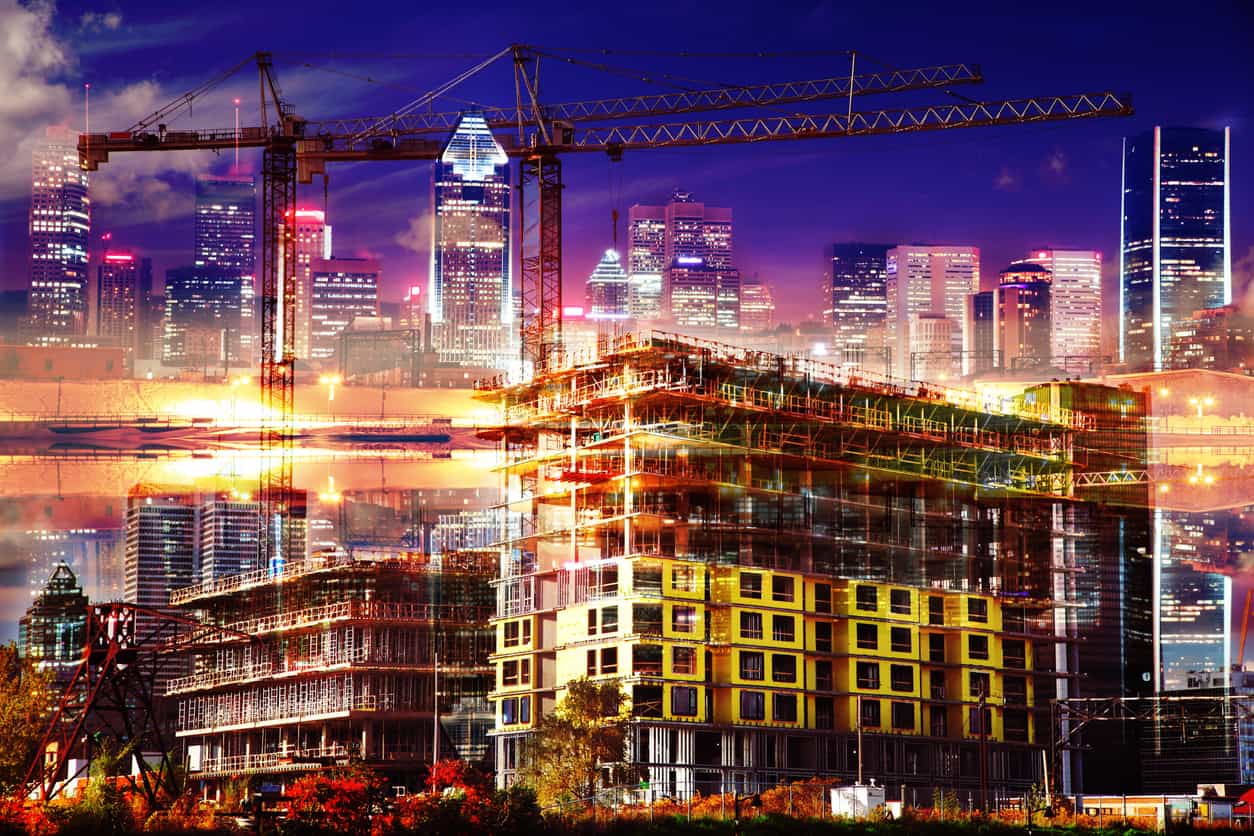Since December 2021, all new constructions (new factories or expansions) must comply with the new ‘Building Energy Efficiency’ chapter in the Quebec Building Code, from which few constructions can be exempt.
This chapter, the result of a collaboration between the Régie du Bâtiment du Québec (RBQ) and Transition Énergétique Québec (TEQ), replaces rules that had been in effect since… 1983!
It represents an adaptation of the 2015 National Energy Code for Buildings (NECB) to the energy context of Quebec, a province where electricity is more affordable, and there is much less reliance on fossil fuels for heating compared to other parts of the country. The provisions related to the building envelope, lighting, and mechanical systems are much more detailed in this new regulation than in the previous one.
National Energy Code of Canada
Energy codes are recognized worldwide as one of the most effective tools for promoting energy efficiency in buildings. In Canada, the NECB was developed as part of a commitment to improve the energy efficiency of Canadian buildings and reduce greenhouse gas emissions.
Energy savings through compliance with the code
Compliance with the NECB requirements during the construction of a building leads to a reduction in energy consumption, cost savings on electricity bills, decreased peak energy demand, and improved indoor quality and comfort.
Compliance with the code is the most cost-effective option.
Incorporating energy efficiency measures from the early stages of building design and construction is the most cost-effective approach. Retrofitting at a later stage is much more expensive, especially regarding the building envelope.
Enhanced Performance
The new requirements are expected to improve the energy performance of new buildings by an average of 27.9% compared to the previous standards (the 1983 requirements are outdated; we are now in 2023), according to the RBQ (Régie du bâtiment du Québec).
TEQ (Transition énergétique Québec) estimates that the increased construction costs due to these new standards result in a simple payback period of nearly 6.8 years.
“It’s clear that there will be impacts on businesses, but we support the societal choice to focus on energy savings,” says Guillaume Houle, spokesperson for the Association de la construction du Québec. Companies in the construction sector will need to train their staff on these new measures and their implications. They will also need to explain to their clients why these new rules lead to increased construction costs.
The NECB focuses on five key design elements:
- Building envelope – This category includes the energy performance of foundations, walls, doors, windows, and the roof. It specifies air infiltration rates and thermal transmission based on effective values, rather than nominal values as in the past.
- Lighting – This category considers measures such as reducing lighting power densities, using lighting control systems, and effectively utilizing natural light.
- Heating, ventilation, and air conditioning systems – These include heat recovery ventilation, insulation of pipes and ducts, as well as control systems and building automation to optimize equipment operation.
- Service water heating – This category addresses all uses of hot water in the building and sets requirements to limit water flow rates, maximize heat recovery from wastewater, and establish minimum performance standards for water heating equipment.
- Motors and electrical power systems – This category sets requirements for monitoring electrical distribution network consumption, limits conductor size to minimize voltage drops, and establishes standards for choosing transformers and electric motors.
Examples:
Insulation and Thermal Bridges
The required thermal resistance for walls, roofs, floors, and slabs (see table below) nearly doubles. This is primarily a catch-up in Part 11, “Energy Efficiency,” of the Building chapter of the Quebec Building Code.

If we settle for an RSI of 3.6 (R20.4) for wall insulation, it’s because the focus is now on total effective resistance rather than nominal thermal resistance, as mentioned earlier. “We consider both the best value of the wall, that of the insulation, and the worst value, that of the framing,” explains Simon Lortie, Coordinator of Regulation and Standardization at TEQ.
Rather than imposing additional insulation thickness in walls, the new regulation demands better material assemblies to insulate thermal bridges, whether it’s a fire-rated wall, a structural beam, a projection, or a balcony slab.
Doors and Windows
The new regulation now sets the overall thermal transmittance coefficient for windows and doors with windows at 2.0. Products that achieve this coefficient are already widely available in the market and do not need to be Energy Star certified.
Openings cannot account for more than 40% of the envelope. This requirement poses a challenge for buildings with large curtain wall areas.
“These buildings will have to comply by simulating [the building’s energy performance by computer], warns Nathalie Lessard, an architect at RBQ who was involved in drafting the regulation. Designers will need to propose performances that go beyond the Code’s requirements, thanks, for example, to better building mechanics or renewable energy production. Many changes have been made to minimize loopholes that would not achieve the desired efficiency.”
Indoor and Outdoor Lighting
To reduce total electricity consumption for lighting, the new regulation specifies maximum lighting power densities for each type of room. Additionally, devices such as timers or photocells must be installed to limit electricity consumption in this area. It will not be necessary to use advanced technologies or LED lights everywhere to meet the required efficiency, as emphasized by Simon Lortie.
In fact, compliance with the requirements can also be achieved through alternative solutions. In this case, proposals will be based on the total energy consumption rather than the power density of each lighting device.
Heat Recovery
The new chapter raises the heat recovery thresholds for ventilation, heating, and air conditioning installations. The regulations also cover pools, refrigeration equipment, and commercial hoods. Equipment that meets these thresholds is already available on the market, and the return on investment is typically quite short.
Questions… about a possible upcoming project!
Feel free to contact us with any questions you may have about the implications of this update on your future expansion and new construction projects. Our ‘Pre-Construction’ team, in collaboration with our various partners, will be delighted to guide you in project development!
By Luc Cusson, VP Engineering and DDA
Frare Gallant Ltd.
Sources:
Website of the Order of Architects of Quebec
Website of the Government of Canada – Natural Resources Ministry”





